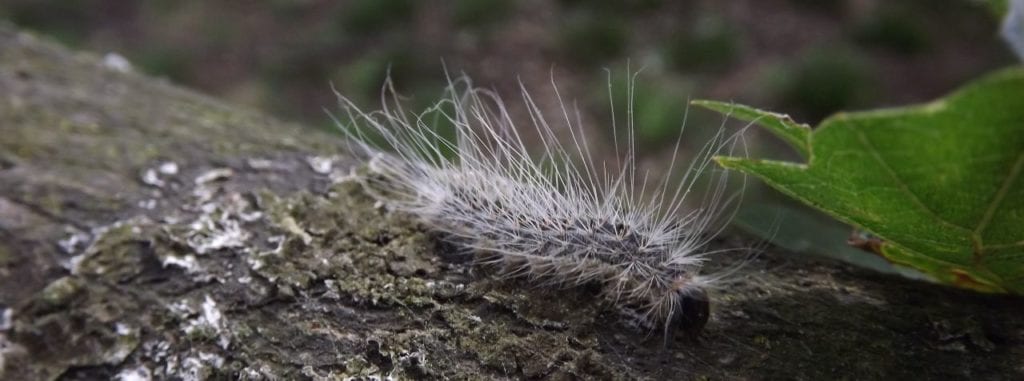Oak Processionary Moth.
The caterpillars and larvae of Oak Processionary Moth (OPM) are pests that infect oak trees in the UK. They pose a severe risk to both trees, humans and animals, so understanding how to recognise an infestation is vital for your health and safety. The pest was accidentally introduced to Britain in 2005 and is now currently most established in Greater London and some areas of South East England. Whether you’re a business owner, farmer or member of the public, having an awareness of OPM is essential when dealing with oak trees.
Signs of infection.
Identifying the signs of infection early on can be essential in treating Oak Processionary Moth. Oak Processionary Caterpillars are visible from mid to late spring and early summer and have very long white hairs which contrast their dark grey body. They build their nests in early summer on the trunks of Oak trees away from the leaves, and they look like large, white silken sacks. It’s is possible to actively survey for nests in winter to identify infection, so that it can be dealt with swiftly.
Reporting Oak Processionary Moths or caterpillars.
What to do if you think you may of spotted Oak Processionary Moths or Caterpillars. If you think that you have found Oak Processionary Caterpillars, do not try to remove the caterpillars yourself, stay well away from them. It is essential to avoid contact with their hairs as they can cause an allergic reaction due to them containing an irritating protein called thaumetopoein. If you think any animals or livestock have been near an OMP infected tree, contact a vet immediately.
Report any sighting of Oak Processionary Caterpillars directly to the Forestry Commission using their tree alert tool www.forestry.gov.uk/treealert. The Oak Processionary caterpillar nests need to be safely disposed of by a trained arborist to avoid the pests from spreading further. Don’t not try do do this yourself as your would be putting your own health at risk by doing so!
Treatment.
A trained and professional tree surgery company like Honey Tree Surgeons Limited will use either chemical control, manual removal of nests, or a combination of the two to remove an Oak Processionary Moth infection. This treatment may take the form of biological control using a chemical such as a Bacillus Thuringiensis, an insect growth regulator that inhibits the pest’s life cycle, or synthetic insecticides. It can take up to five months for the treatment of Oak Processionary Moth to be fully effective.
Do you need a reliable, conscientious, high quality and cost efficient tree surgery company? If you live in the Hertfordshire, Bedfordshire, Cambridgeshire or North London area and need help with tree care, please contact us anytime on 07900906249 or info@honeytreesurgeonsltd.co.uk.
We deal with all aspects of tree surgery, pollarding, reduction, removal, as well as tree stump grinding.
Here at Honey Tree Surgeons Ltd, we pride ourselves on providing our customers with high quality service and are experts within our industry. We adhere to and conform with industry standard practice and hold industry approved insurances and qualifications.
Our professional and reliable service is here to get your garden looking better than ever. We are always happy to provide you with a written quotation and facilitate any permissions you may require from your local authority.
We come highly recommended by our customers, and you can see an extensive collection of these reviews on our website, www.honeytreesurgeonsltd.co.uk.
So why not take the first step today in transforming your outdoor space. Find out how we can help, on 07900906249, or email on info@honeytreesurgeonsltd.co.uk.
